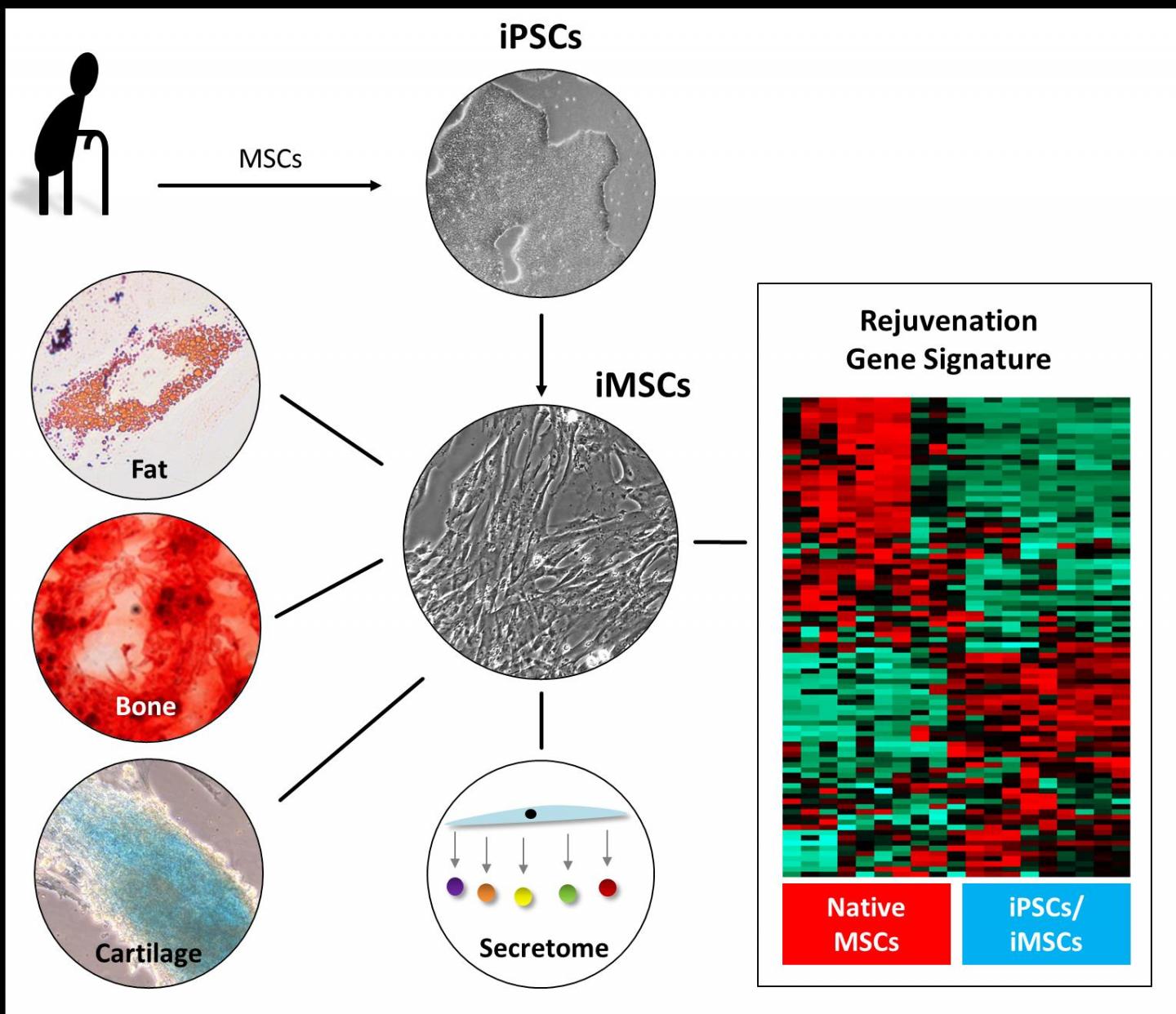Recent publication in Stem Cell Research and Therapy

Credit: Spitzhorn LS, et. al.
The use of primary mesenchymal stem cells (MSCs) is fraught with ageing-related shortfalls such as limited expansion and early senescence. Human induced pluripotent stem cells (iPSCs) -derived MSCs (iMSCs) have been shown to be a useful clinically relevant source of MSCs that circumvent these ageing-associated drawbacks. The importance of this concept is manifested by the successful Phase 1 clinical trial for the treatment of GvHD by Cynata Therapeutics and the National Health Service- UK; a Phase 2 trial is planned for 2019. Note, this trial is independent of the work carried out by Spitzhorn et al.-described below.
A collaborative study co-ordinated by the Institute for Stem Cell Research and Regenerative Medicine (Prof. Dr. James Adjaye) which includes the Division of Paediatric Stem Cell Therapy, Clinic for Pediatric Oncology, Hematology and Clinical Immunology (Prof. Dr. Meisel) and the Institute for Transplantation Diagnostics and Cell Therapeutics (PD Dr. Sorg) from the Medical Faculty of Heinrich Heine University Düsseldorf and the Bone and Joint Research Group, Centre for Human Development, Stem Cells and Regeneration from the University of Southampton (Prof. Dr. Richard Oreffo) published in the journal Stem Cell Research and Therapy analysed the acquisition of rejuvenation-associated hallmarks in iMSCs.
In their study, the team compared cellular features, transcriptomes and secretomes of iMSCs differentiated from embryonic stem cells (ESCs-H1) and iPSCs, emanating from MSCs isolated young and elderly individuals. The generated iMSCs (irrespective of source) met the criteria set out for MSCs and dendrogram analyses confirmed that the transcriptomes of all iMSCs clustered together with the parental MSCs and distinct from pluripotent stem cells.
Irrespective of donor age and initial cell type, iMSCs acquired a rejuvenation-associated 50-gene comprising signature which is also expressed in pluripotent stem cells but not in the parental MSCs.
Significantly, in terms of regenerative medicine, iMSCs acquired a secretome similar to that of primary MSCs, thus highlighting their ability to act via paracrine signalling.
The iMSC concept has enabled circumventing the drawbacks associated with the use of adult MSCs and thus provide a promising tool for use in various clinical settings in the future.
###
Publication: Spitzhorn LS, Megges M, Wruck W, Rahman MS, Otte J, Degistirici Ö, Meisel R, Sorg RV, Oreffo ROC, Adjaye J. Human iPSC-derived MSCs (iMSCs) from aged individuals acquire a rejuvenation signature. Stem Cell Res Ther. 2019 Mar 18;10(1):100. doi: 10.1186/s13287-019-1209-x. PubMed PMID: 30885246.
Weblink: https:/
Media Contact
Dr. James Adjaye
[email protected]
Related Journal Article
http://dx.




